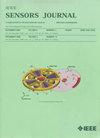MLANet:一种基于多层次多关注特征融合的复杂海事背景环境鲁棒船舶分割网络
IF 4.3
2区 综合性期刊
Q1 ENGINEERING, ELECTRICAL & ELECTRONIC
引用次数: 0
摘要
合成孔径雷达(SAR)是一种强大的远程、全天候、大规模监视传感器,基于SAR的船舶语义分割成为研究热点。然而,由于SAR图像中复杂的背景干扰,对港口附近水域的船舶,特别是小型船舶的准确分割仍然是一个挑战。目前的方法往往难以为小型船舶提取足够的特征,导致高漏检率。此外,复杂的海洋背景增加了误检率。为了解决这些问题,我们提出了MLANet,这是一种多级特征增强、多注意力融合网络,专门用于SAR图像中的船舶分割。MLANet利用卷积神经网络(CNN)和Transformer的优势进行高效的多尺度特征提取。特征增强模块(FEM)细化全局和局部特征,为小型船舶保留关键信息,而注意力融合模块减少背景干扰。此外,在分割过程中,混合损失函数同时强调血管的形状和边界。实验结果表明,MLANet在SAR船舶检测数据集(SSDD)上实现了94.83%的平均像素精度(mPA)和90.66%的平均交联精度(mIoU),在高分辨率SAR图像数据集(HRSID)上实现了91.74% mPA和87.72%的平均交联精度(mIoU),显示了其在挑战性环境下的强大竞争力和有效性。本文章由计算机程序翻译,如有差异,请以英文原文为准。
MLANet: A Robust Ship Segmentation Network Based on Multilevel Multiattention Feature Fusion for Complex Maritime Background Environments
Synthetic aperture radar (SAR) is a powerful sensor for long-range, all-weather, and large-scale surveillance, making SAR-based ship semantic segmentation a research hotspot. However, accurate segmentation ships, especially small vessels, in near-port waters remain a challenge due to complex background interference in SAR images. Current methods often struggle to extract sufficient features for small ships, leading to high missed detection rates. Furthermore, the complex oceanic background increases false detection rates. To address these issues, we propose MLANet, a multilevel feature-enhanced, multiattention fusion network specifically designed for ship segmentation in SAR images. MLANet leverages the strengths of both convolutional neural network (CNN) and Transformer to perform efficient multiscale feature extraction. The feature enhancement module (FEM) refines global and local features, retaining critical information for small ships, while the attention fusion module reduces background interference. Additionally, a hybrid loss function emphasizes both the shape and boundary of vessels during segmentation. The experimental results show that MLANet achieves 94.83% mean pixel accuracy (mPA) and 90.66% mean intersection over union (mIoU) on the SAR ship detection dataset (SSDD), and 91.74% mPA and 87.72% mIoU on the high-resolution SAR image dataset (HRSID), demonstrating its strong competitiveness and effectiveness in challenging environments.
求助全文
通过发布文献求助,成功后即可免费获取论文全文。
去求助
来源期刊

IEEE Sensors Journal
工程技术-工程:电子与电气
CiteScore
7.70
自引率
14.00%
发文量
2058
审稿时长
5.2 months
期刊介绍:
The fields of interest of the IEEE Sensors Journal are the theory, design , fabrication, manufacturing and applications of devices for sensing and transducing physical, chemical and biological phenomena, with emphasis on the electronics and physics aspect of sensors and integrated sensors-actuators. IEEE Sensors Journal deals with the following:
-Sensor Phenomenology, Modelling, and Evaluation
-Sensor Materials, Processing, and Fabrication
-Chemical and Gas Sensors
-Microfluidics and Biosensors
-Optical Sensors
-Physical Sensors: Temperature, Mechanical, Magnetic, and others
-Acoustic and Ultrasonic Sensors
-Sensor Packaging
-Sensor Networks
-Sensor Applications
-Sensor Systems: Signals, Processing, and Interfaces
-Actuators and Sensor Power Systems
-Sensor Signal Processing for high precision and stability (amplification, filtering, linearization, modulation/demodulation) and under harsh conditions (EMC, radiation, humidity, temperature); energy consumption/harvesting
-Sensor Data Processing (soft computing with sensor data, e.g., pattern recognition, machine learning, evolutionary computation; sensor data fusion, processing of wave e.g., electromagnetic and acoustic; and non-wave, e.g., chemical, gravity, particle, thermal, radiative and non-radiative sensor data, detection, estimation and classification based on sensor data)
-Sensors in Industrial Practice
 求助内容:
求助内容: 应助结果提醒方式:
应助结果提醒方式:


